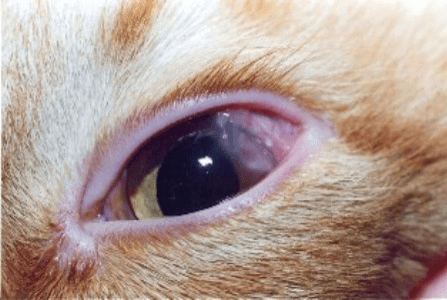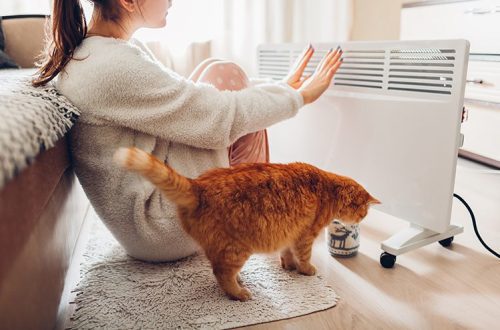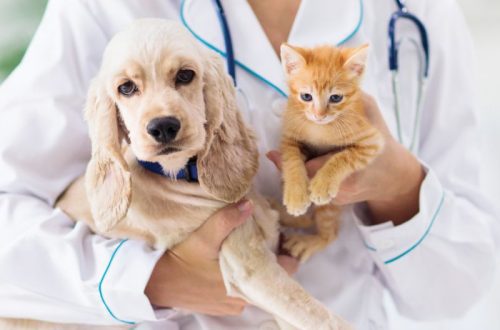
Diseases of the eyes of cats
Diseases cat eye is a fairly common phenomenon. As a rule, in this case, they are nervous, comb their eyelids, lacrimation is observed. Helping a pet is our responsibility.
Contents
What Eye Diseases Are Common in Cats?
Diseases of the eyes of cats are divided into two groups: 1. Diseases that affect the protective devices of the eye and eyelids:
- wounds and bruises
- eversion and inversion of the eyelids
- blepharitis (inflammation of the eyelid)
- fusion and non-closure of the eyelid
- drooping of the upper eyelid (ptosis)
- neoplasms.
2. Diseases affecting the eyeball:
- dislocation of the eyeball
- cataract
- glaucoma and secondary glaucoma (dropsy)
- inflammation and ulcer of the cornea
- neoplasms in the conjunctiva (dermoid)
- keratitis (deep purulent, superficial vascular, superficial purulent)
- conjunctivitis (purulent, acute catarrhal, etc.)
Symptoms of cat eye disease
Wounds and bruises
- Redness.
- Edema.
- Sometimes bleeding.
Eyelid inflammation
It can be simple (a consequence of eczema or beriberi) and phlegmous (a consequence of a deep wound and severe scratching). Phlegmous inflammation:
- The eyelid swells.
- Purulent mucus flows from the eye.
Simple inflammation:
- The cat scratches the eye.
- The eyelids become tight and red.
Inversion of the eyelids in cats
When the eyelids turn in in cats, the skin turns inward, and this causes severe inflammation. If the cat is not helped, the disease can develop into conjunctivitis or keratitis, or even into a corneal ulcer. The cause may be a foreign body in the eye, untreated conjunctivitis, or chemicals.
- Lachrymation.
- Photophobia.
- The eyelid is swollen.
Conjunctivitis in cats
Perhaps one of the most common eye diseases in cats. Has several varieties.Allergic Conjunctivitis cause allergens. Clear discharge flows from the eyes. If the disease is not treated, the discharge becomes purulent. purulent conjunctivitis the general condition of the cat worsens, the body temperature rises, diarrhea and vomiting are sometimes observed. Discharge from the eyes is profuse and purulent. acute catarrhal conjunctivitis there is redness of the eye and severe swelling. This is a painful condition, accompanied by serous-mucous discharge and lacrimation. As a rule, it is a consequence of an injury, an infection, or a lack of vitamin A.
Keratitis
This is a disease of the cornea of the eye of cats. If the keratitis is superficial, purulent, the upper (epithelial) layer of the cornea suffers. Symptoms: anxiety, photophobia, constant pain. Edema appears, the cornea acquires a grayish color. The cause is trauma. Superficial vascular keratitis is characterized by the germination of capillaries in the upper layers of the cornea, which leads to clouding of the eye. Symptoms are similar to superficial purulent keratitis. A more serious disease is deep purulent keratitis. It is caused by microbes that penetrate the stroma of the cornea. The cat scratches its eyes continuously, photophobia is observed. The cornea becomes pale yellow. Reasons: injuries and infections.
Corneal ulcers in a cat
Causes: infections and deep wounds. Sometimes ulcers are a complication of purulent keratitis. The main symptom is anxiety due to severe pain. The ulcer can be purulent or perforated. A perforated ulcer is accompanied by purulent discharge, the cornea acquires a gray-blue tint. Sometimes there are spasms of the eyelids, as well as photophobia. When the ulcer heals, a scar remains.
Glaucoma in a cat
The disease can be congenital, angle-closure or open-angle. The main symptom: periodic or constant increase in intraocular pressure. If open-angle glaucoma, the cornea becomes cloudy, loses sensitivity, becomes colorless. Angle-closure cornea is expressed in an annular opacification of the cornea. Causes of the disease: dislocation or swelling of the lens, hemorrhage or complication of deep purulent keratitis.
Cataracts in cats
A cataract is a clouding of the lens. There are several types: symptomatic, traumatic, toxic, congenital. The last stages are characterized by severe visual impairment. The lens becomes bluish or white. Causes: trauma, inflammation, past infections. Cataracts are often found in older cats.
Treatment of eye diseases in cats
At the first signs of eye disease in cats, you should contact your veterinarian and then strictly follow his recommendations. As a rule, eye washing (with a solution of potassium permanganate and furatsilin), as well as ointments and drops with antibiotics, is prescribed. After you treat your eyes, it is better to hold the cat in your arms so that she doesn’t get rid of the drug.
It is extremely undesirable to engage in self-medication, since the lack of help or improper treatment will give the cat a lot of unpleasant impressions and can result in blindness.
The best prevention of diseases is proper eye care for your pet.





